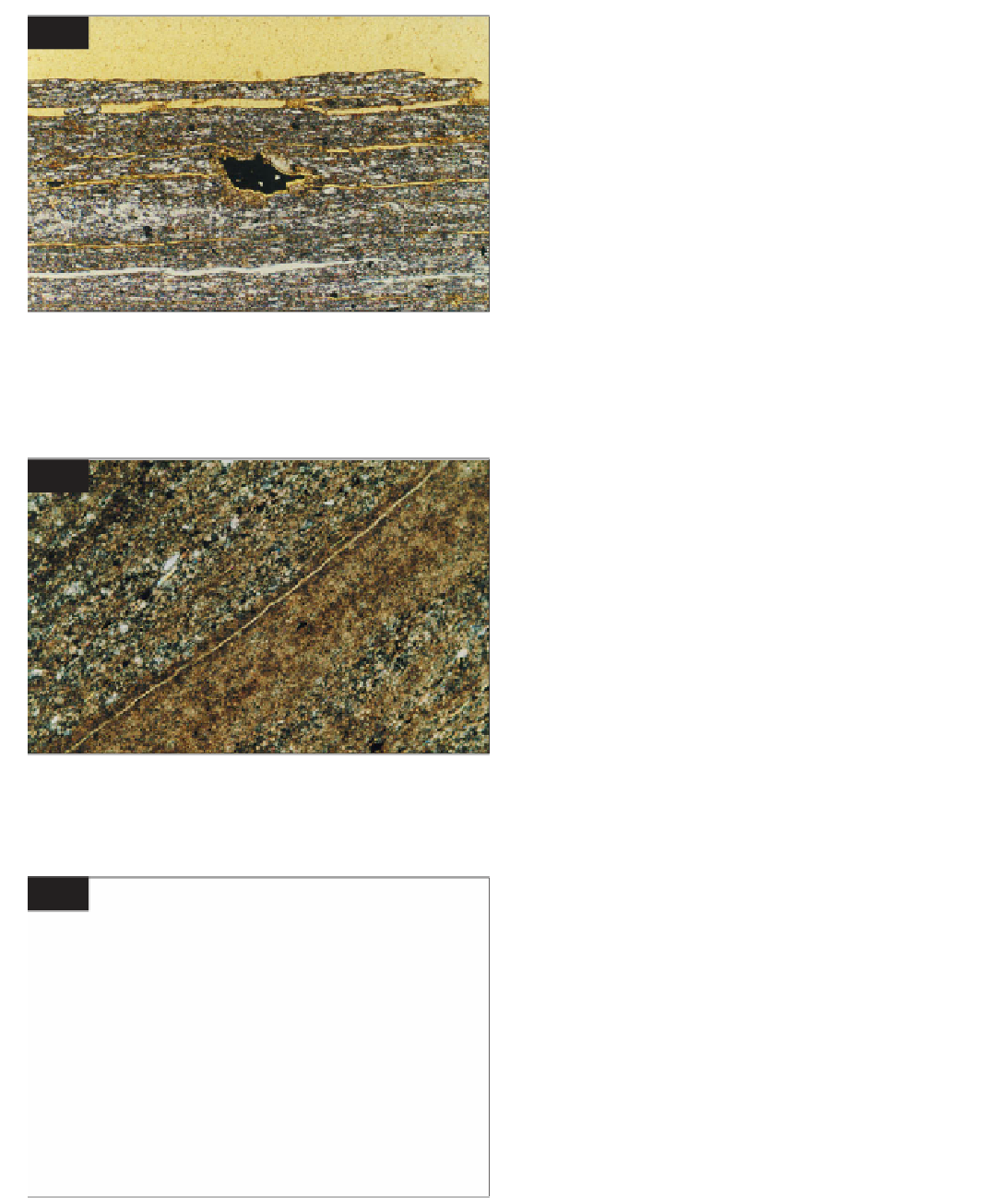Geoscience Reference
In-Depth Information
118
released when pyrite decays. Calcite reacts with sulfuric
acid to form the expansive mineral gypsum (calcium
sulfate hydrate) as follows:
CaCO
3
+ H
2
SO
4
+ H
2
O
→
CaSO
4
.H
2
O + CO
2
Where inclusions of reactive pyrite and calcite occur
together they can cause rapid deterioration. Where these
inclusions run through the full thickness of the slate the
deterioration can cause the slate to split. EN 12326-1
(British Standards Institution, 2004) recognizes that
certain slates may contain acid-soluble carbonate
minerals. The standard permits the use of certain slates
containing carbonate minerals providing that they meet
defined strength and durability criteria and that they are
sufficiently thick to compensate for potentially increased
weathering rates.
The action of weathering on roofing slates, often
involving a combination of physical, chemical, and
biological mechanisms, can result in delamination,
cracking, and splitting. Delamination involves cracking
parallel to the cleavage surfaces that starts from the
exposed dressed edge and moves inwards, towards the
centre of the slate (
118
). Incompletely metamorphosed
slates of shaly character can be unacceptably weak and
have been observed to exhibit delamination even prior to
use (
119
). Delaminated or otherwise weakened slates are
subsequently vulnerable to cracking or splitting
perpendicular to the cleavage, or along the grain.
Incipient cracks, where the slate is cracked but still holds
together, may be visible on the cleavage surface as white
lines and microscopically these cracks are sometimes
seen to intersect with delaminations (
120
).
118
Weathering delamination in Cornish slate after 70
years on a roof. The delaminations are highlighted by
the yellow resin used to impregnate the specimen;
PPT, ×75.
119
119
Pre-existing delamination (yellow) of Brazilian
mudstone/siltstone being sold as roofing slate; XPT,
×150.
RESULTS
120
The first question to be answered is 'is the rock a true
slate?' EN 12326-1 requires that roofing slate must be a
true slate in the geological sense (with phyllosilicate
minerals predominating and exhibiting a prominent slaty
cleavage), otherwise the material does not fall within the
scope of the standard and cannot be sold as complying
with it. This geological classification can only be
determined by petrographic examination. Petrography is
also the first line of defence to check that material
supplied is the slate type ordered and to detect if an
inferior product has been substituted.
The petrographic examination will also determine if the
slate has any inherent physical or petrographic defects or
damage that would be detrimental to performance. EN
12326-1 requires that slate shall be free from such defects.
120
Incipient crack (yellow) in shaly Spanish slate.
The crack intersects with a delamination; PPT, ×75.




